

What is white, slightly overweight and even really fast within the framework of their genes? No, we are not writing about a full Snow White on Speed, but the Galax GeForce GTX 1070 Ti Hall of Fame, which is held in Europe for trademark reasons. KFA2/Galax uses a modified GTX 1070 Hall of Fame board for the GTX 1070 Ti Hall of Fame, but with slightly improved assembly. This, in turn, is not a cost-down, but also takes into account objections from our previous reviews similar to... Important preliminary remark
We had already mentioned it at the beginning that almost exclusively the resulting boost clock rates of each GTX 1070 Ti determine the final performance and thus the so-called GPU lottery and not the manufacturer and model.... Power consumption at different loads
The power consumption in the Torture Loop is pretty much exactly on the point that Nvidia set as the Power Target with 180 watts. In the gaming loop, the power consumption of 174 watts is even below the... Overclocking
The limits of this card are far higher than those of the competitors with similar Power Target, which is of course also due to the already mentioned good GPU quality. however, this alone is of little use if the tension is... Cooling system and backplate
Of course, the generated waste heat is directly related to the recorded power, for which the cooling solution is responsible for optimum dissipation. This rather massive cooling relies on a large lamellar... Summary
White card, white vest? Almost, because the manufacturer does not make any real mistakes except for the trimmed chip (for which he can't do anything). On the contrary, it is only by changing the voltage converters to eight ech...
Power consumption at different loads
The power consumption in the Torture Loop is pretty much exactly on the point that Nvidia set as the Power Target with 180 watts. In the gaming loop, the power consumption of 174 watts is even lower than this value. With the maximum possible power target of 138% (which we couldn't even take advantage of for our sample), the card with a good 190 watts remained at an astonishing 2152 MHz (Witcher 3 Ultra-HD, warmed up, raised to 1,093V voltage) in one area that we didn't want to believe at all.
This result, which we have been able to reproduce several times, proves once again what possibilities one can expect if the chip quality is as good as ours. We wouldn't have expected anything like this with a partially disabled card. But you never learn in the end.
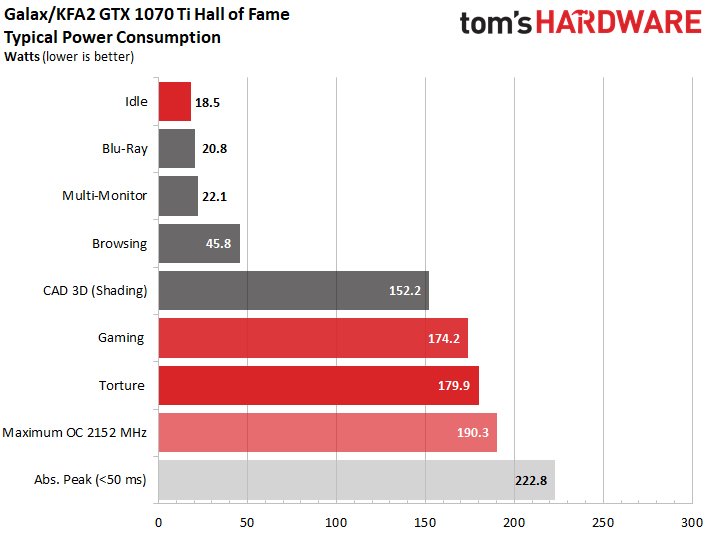
The corresponding voltages for both loops in the factory state are shown in the following diagram:
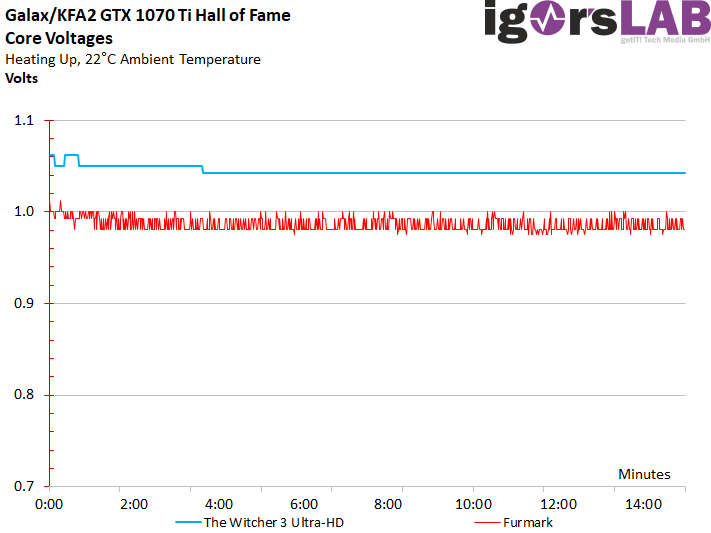
Compliance with the standard on the motherboard slot
With a maximum of 3.3 amps (torture), the card is still far below what the PCI SIG sets with a maximum of 5.5 amps (66 watts) for the 12-volt rail on the motherboard slot. In the Gaming Loop, 2.9 ampere is just as much lower than the maximum overclocking. Overall, therefore, balancing has been implemented in a truly exemplary manner.
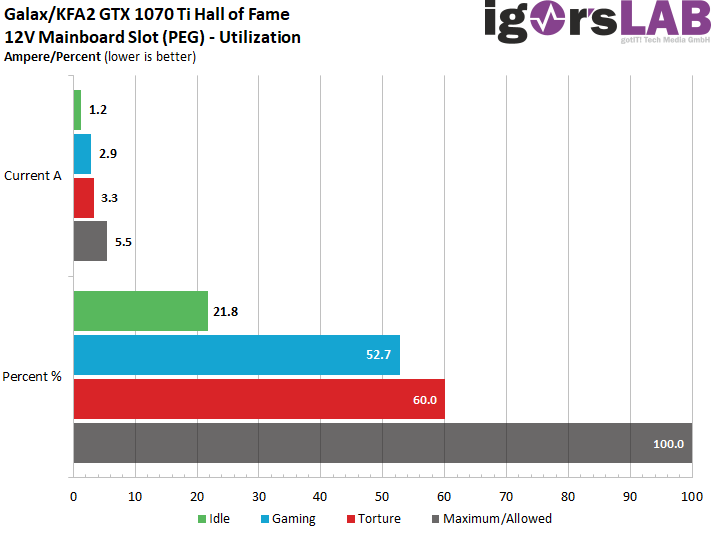
Detailed graphics: power consumption and currents
For a better illustration, we have also recorded all measurement results as detailed curves in the graphs below:
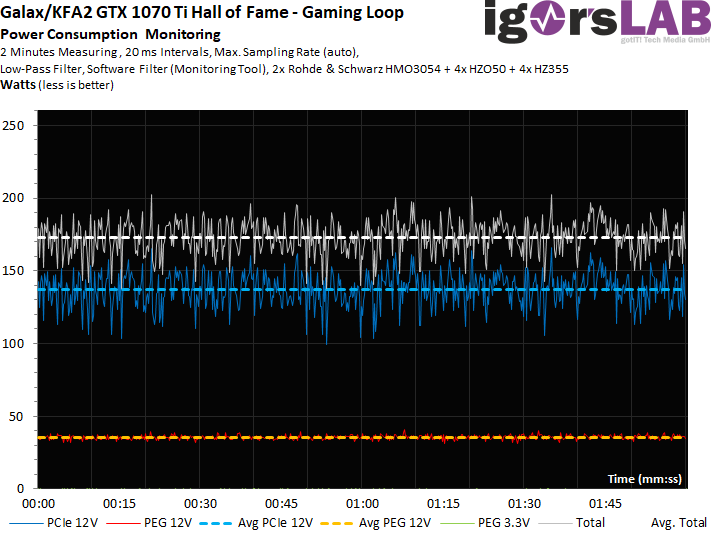
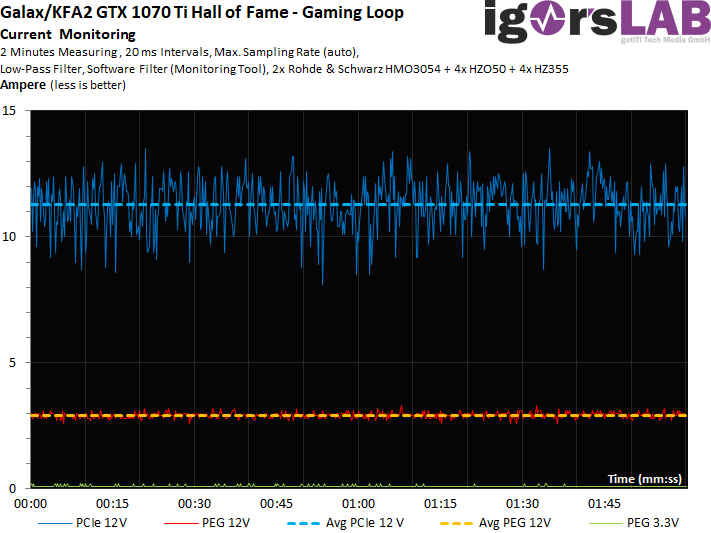
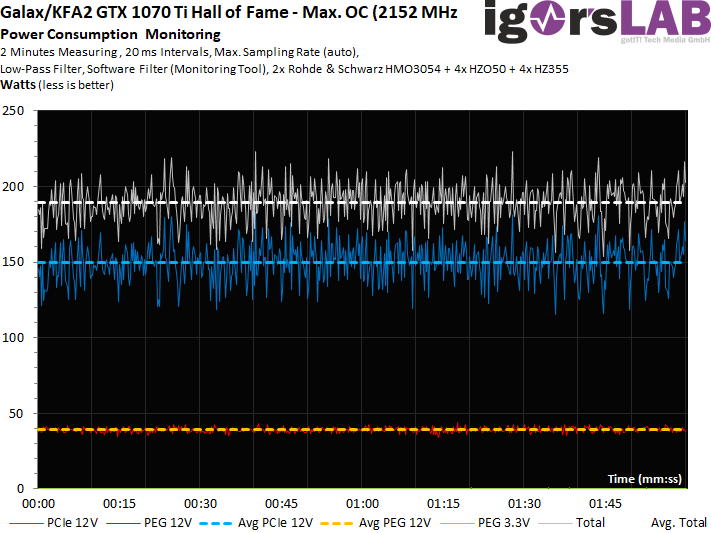
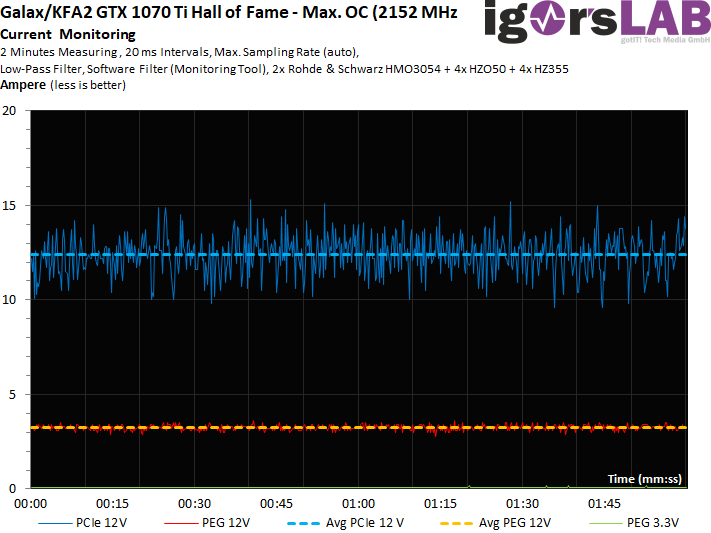
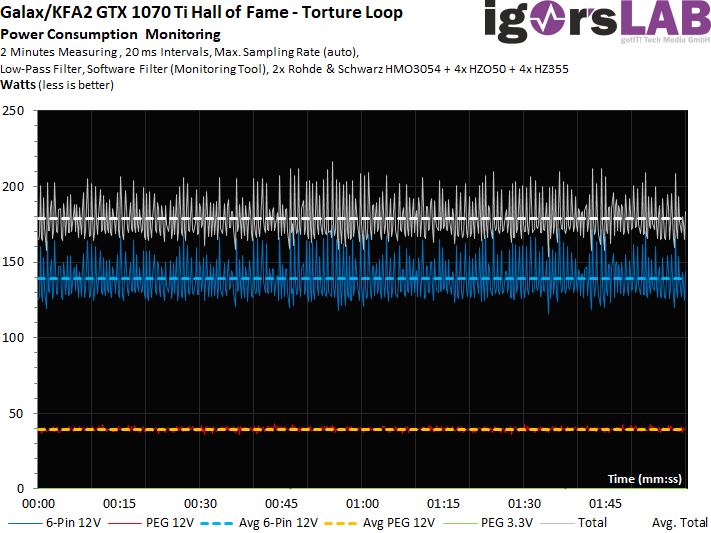
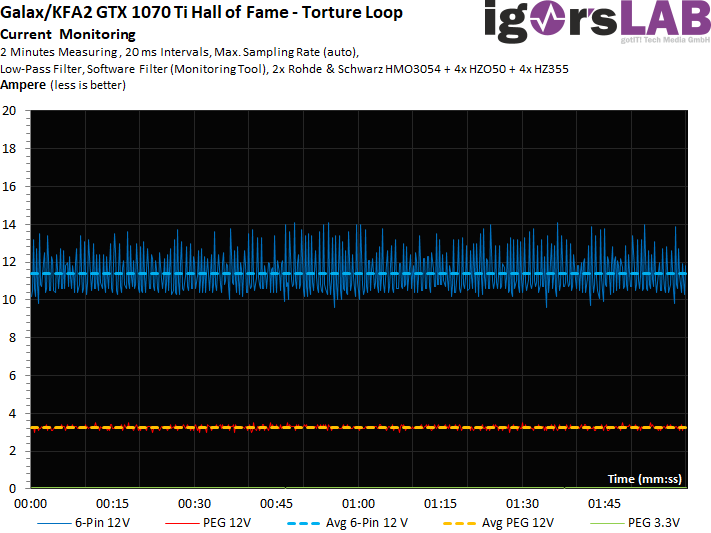











































Kommentieren